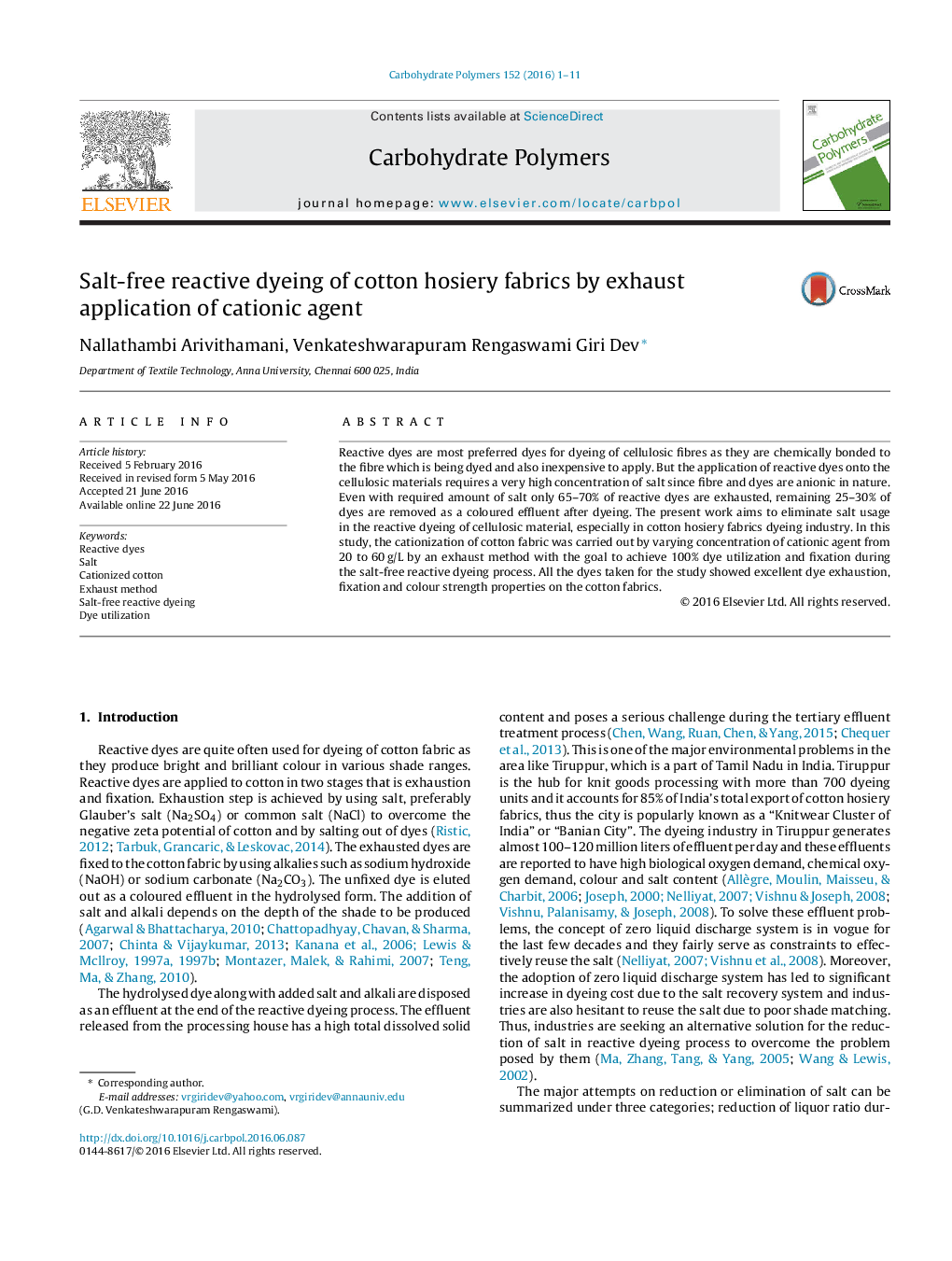| Article ID | Journal | Published Year | Pages | File Type |
|---|---|---|---|---|
| 1373614 | Carbohydrate Polymers | 2016 | 11 Pages |
•Reactive dyeing of cotton fabric requires high concentration of exhausting agent (salt).•Even with the addition of salt only 65–70% of the dyes get exhausted, remaining dyes removed as a coloured effluents.•Surface modification of cotton has been carried out using cationic agent CHPTAC by exhaust method.•Salt free dyeing at industrial scale has been achieved and the results suggest that the proposed method can be taken directly by the hosiery dyeing units.
Reactive dyes are most preferred dyes for dyeing of cellulosic fibres as they are chemically bonded to the fibre which is being dyed and also inexpensive to apply. But the application of reactive dyes onto the cellulosic materials requires a very high concentration of salt since fibre and dyes are anionic in nature. Even with required amount of salt only 65–70% of reactive dyes are exhausted, remaining 25–30% of dyes are removed as a coloured effluent after dyeing. The present work aims to eliminate salt usage in the reactive dyeing of cellulosic material, especially in cotton hosiery fabrics dyeing industry. In this study, the cationization of cotton fabric was carried out by varying concentration of cationic agent from 20 to 60 g/L by an exhaust method with the goal to achieve 100% dye utilization and fixation during the salt-free reactive dyeing process. All the dyes taken for the study showed excellent dye exhaustion, fixation and colour strength properties on the cotton fabrics.
